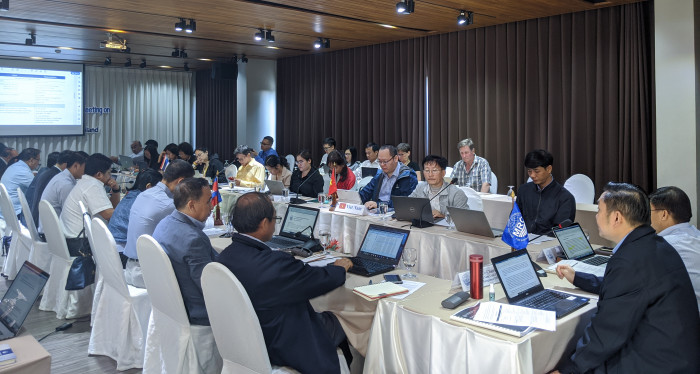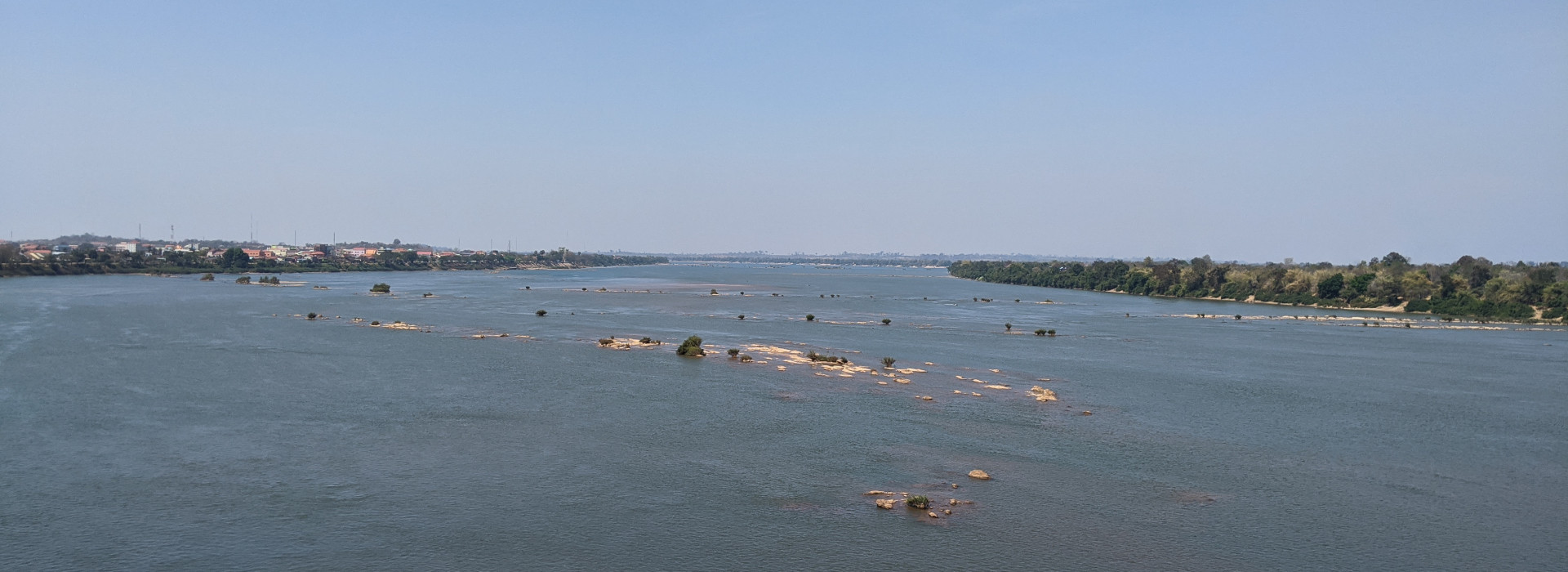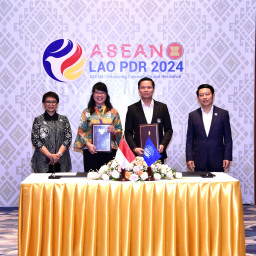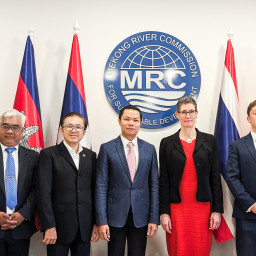Pilot program to monitor impacts from Xayaburi and Don Sahong takes off
Norng Khai, Thailand, 24 February 2020 – Officials and experts from the lower Mekong countries kicked off the Mekong River Commission’s pilot program to monitor transboundary environmental impacts from the Xayaburi and Don Sahong dams to advise on measures to address any negative effects from the existing and future Mekong mainstream hydropower projects.
The announcement came out last week during a two-day expert group meeting of the Mekong River Commission that was held from Thursday to Friday in the northeastern Thai province of Nong Khai.

Officials from the Mekong countries of Cambodia, Lao PDR, Thailand, and Viet Nam and specialists from the MRC Secretariat attend the two-day expert group meeting in Nong Khai of Thailand.
The Xayaburi and Don Sahong are the first two dams already built on the mainstream of the lower Mekong River in Lao PDR. During their six-month prior consultation process under the MRC procedures and throughout their construction stage, Cambodia, Thailand and Viet Nam and other concerned stakeholders called for a program to properly and systematically assess impacts from the dams once they go online.
Dr. So Nam, the MRC Secretariat Chief Environmental Management Officer, said at the meeting the pilot program Joint Environment Monitoring of Mekong Mainstream Hydropower Projects (JEM) is a response to the call to provide the standard operating procedures for joint environment monitoring of Mekong mainstream hydropower projects.
“The overall objective of the JEM is to systematically collect, generate and share reliable and scientific data and information through a standardized basin wide joint environmental monitoring program on site-specific issues that have cross-national implications,” Mr. Nam said.
He added that the monitoring process, which runs from 2020 – 2021, will allow testing teams to trial and refine proposed monitoring approaches and methodologies that can later be applied at a basin-wide scale and incorporated into the MRC’s core monitoring work.
“The pilot program at the Xayaburi and Don Sahong dam will involve monitoring five key disciplines, including hydrology and hydraulics, sediment, water quality, aquatic ecology, and fish and fisheries.”
Data collection equipment will be installed in at least three locations in each dam, depending on the discipline. At the upper-reach of the dam, there will be a minimum of two monitoring sites that are located at the upstream of the impoundment area and within the impoundment area. At the lower-reach of the dam, there is at least one monitoring site.
The developers of the two dams, and technical specialists from Cambodia, Lao PDR, Thailand and Viet Nam, and from the MRC Secretariat, with support from the German development agency Deutsche Gesellschaft für Internationale Zusammenarbeit (GIZ), will work together throughout this monitoring process.
The national teams from each Mekong country will be trained on how to collect the data, using approaches and methodologies they agreed to at this meeting.
Once the data are collected, all the teams will work together to analyze and produce monitoring reports that will be shared with the public through an MRC’s regional stakeholder forum, website and other communication channels. These reports will include initial findings and encountered challenges and shortcomings of the proposed monitoring approaches and methodologies, which will be used to update the current JEM program.
“With these preliminary findings, we will be able to understand the effectiveness of the dam facilities, including fish passes and sediment flushing gates,” Mr. Nam said. “From there, we hope to identify some practical adaptive management actions and initial mitigation measures that could eventually help address some of the potential impacts from the two already existing mainstream dams.”
Note to editors:
The MRC is an intergovernmental organization for regional dialogue and cooperation in the lower Mekong river basin, established in 1995 based on the Mekong Agreement between Cambodia, Lao PDR, Thailand, and Viet Nam. The organization serves as a regional platform for water diplomacy as well as a knowledge hub of water resources management for the sustainable development of the region.
- END -





